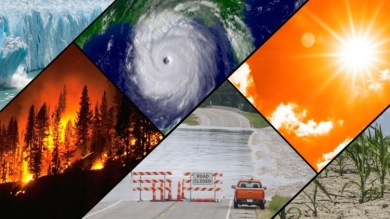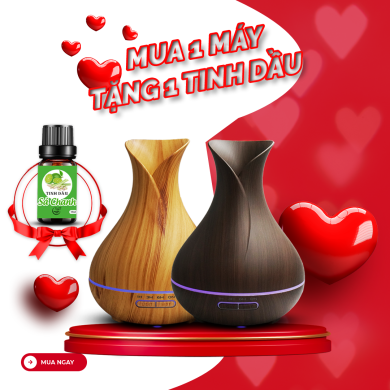The increasingly symbiotic relationship between humans and technology signals a new era in the evolution of life on Earth.

Do you think human beings are the last stage in evolution? If not, what comes next?
I do not think human beings are the last stage in the evolutionary process. Whatever comes next will be neither simply organic nor simply machinic but will be the result of the increasingly symbiotic relationship between human beings and technology.
Bound together as parasite/host, neither people nor technologies can exist apart from the other because they are constitutive prostheses of each other. Such an interrelation is not unique to human beings. As the physiologist J. Scott Turner writes in “The Extended Organism”: “Animal-built structures are properly considered organs of physiology, in principle no different from, and just as much a part of the organism as kidneys, heart, lungs or livers.” This is true for termites, for example, who form a single organism in symbiosis with their nests. The extended body of the organism is created by the extended mind of the colony.
If we have an expanded understanding of body and mind, and if nature and technology are inseparably entangled, then the notion of “artificiality” is misleading. So-called “artificial” intelligence is the latest extension of the emergent process through which life takes ever more diverse and complex forms.
Our consideration of quantum phenomena, mindful bodies, relational ecology, and plant and animal cognition has revealed that we are surrounded by and entangled with all kinds of alternative intelligences. AI is another form of alternative intelligence. Critics will argue that what makes AI different is that it has been deliberately created by human beings. However, all organisms both shape and are shaped by their expanding bodies and minds. Instead of being obsessed with the prospect of creating machines whose operation is indistinguishable from human cognition, it is more important to consider how AI is different from human intelligence. The question should not be: Can AI do what humans can do? But rather: What can AI do that humans cannot do?
What is needed is a non-anthropocentric form of “artificial” intelligence. If humanity is to live on, AI must become smarter than the people who have created it. Why should we be preoccupied with aligning superintelligence with human values when human values are destroying the Earth, without which humans and many other forms of life cannot survive?
With the growing entanglement of the biosphere and the technosphere, further symbiogenesis is the only way to address the very real existential threat we face. But it is all too easy to wax optimistic about the salvific benefits of technology without being specific. Here I want to suggest four trajectories that will be increasingly important for the symbiotic relationship between humans and machines: neuroprosthetics, biobots, synthetic biology and organic-relational AI.
“Whatever comes after the human will be neither simply organic nor machinic but the result of the increasingly symbiotic relationship between human beings and technology.”
Neuroprosthetics
We live during a time when dystopian dread has been weaponized to create paralyzing despair that leaves many people — especially the young — hopeless. Without underestimating the actual and possible detrimental effects of rapid technological change, it is important not to let these dark visions overshadow the remarkable benefits many of these technologies bring.
As a long-time Type 1 diabetic, my life depends on a digital prosthesis I wear on my belt 24/7/365, which operates by artificial intelligence and is connected to the internet. Just as the Internet of Bodies creates unprecedented possibilities for monitoring and treating bodily ailments, so the Internet of Things connects smart devices wired to global networks that augment intelligence by expanding the mind. While critics and regulators of recent innovations attempt to distinguish the technologies used for therapy, which are acceptable, from technologies used for enhancement, which are unacceptable, the line between these alternative applications is fuzzy at best. What starts as treatment inevitably becomes enhancement.
Neither neuroprosthetics nor cognitive augmentation is new. Writing, after all, is a mnemonic technology that enhances the mind. In modern times, we have been enabled to archive and access memories through personal devices. Most recently, technological innovations have taken cognitive enhancement to another level: brain implants, for example, have been around since at least 2006, and entrepreneurs like Elon Musk (who founded Neuralink to “create … symbiosis with artificial intelligence”) aim to establish embodied human-machine interfaces. Increasing possibilities for symbiotic relations between computers and brains will lead to alternative forms of intelligence that are neither human nor machinic, but something in between.
“So-called ‘artificial’ intelligence is the latest extension of the emergent process through which life takes ever more diverse and complex forms.”
Biobots
In recent years, there has been a revolution in robotics as the result of developments in nanotechnology and the refinement of large language models like ChatGPT. Individual as well as swarms of nanobots might one day be implanted in the body and used for diagnostic and therapeutic purposes, potentially delivering drugs and repairing tissue. Rather than working through the entire body, nanobots might target the precise location where a drug is needed and regulate its delivery.
The most noteworthy deployment in nanotechnology to date is its use in vaccines, including the Covid vaccines. As a group of microbiology and pharmacology experts wrote in a 2021 paper, “Nanotechnology has played a significant role in the success of these vaccines”; the emergency use authorization that allowed the rapid development and testing of this technology “is a major milestone and showcases the immense potential of nanotechnology for vaccine delivery and for fighting against future pandemics.” Nanotechnology research and development are in the very early stages but are developing rapidly. As they progress, not only will bodies become more mindful, but it will be increasingly difficult to distinguish the natural from the artificial.
While nanobots are implanted in the body and operate at the molecular level, other robots are becoming both increasingly autonomous and able to think and act in ways that are more human-like. Kevin Roose reported in the New York Times that Google’s latest robot RT-2 can interpret images and analyze the surrounding world. “It does so by translating the robot’s movements into a series of numbers — a process called tokenizing — and incorporating those tokens into the same training data as the language model. Eventually, just as ChatGPT or Bard learns to guess what words should come next in a poem or a history essay, RT-2 can learn to guess how a robot’s arm should move to pick up a ball or throw an empty soda can into the recycling bin.” Thus, rather than programming a robot to perform a specific task, it is possible to give the robot instructions for the task to be performed and to let the machine figure out how to do it.
Building on these recent advances, Hod Lipson, the director of the Creative Machines Lab at Columbia University, is taking robotic research to the next level, building “robots that create and are creative.” His research is “inspired from biology,” and he is searching for “new biological concepts for engineering and new engineering insights into biology.”
“It will be increasingly difficult to distinguish the natural from the artificial.”
Lipson’s ultimate goal is to create robots that not only can reason but also are conscious and self-aware. Defining consciousness as “the ability to imagine yourself in the future,” he confidently predicts that “eventually these machines will be able to understand what they are, and what they think.” As cognitive skills enabled by generative AI become more sophisticated, physical movements and activities will become more “natural.” With these new skills, robots might have the agility to navigate in their surroundings as effectively as humans.
Science and art meet in biobots. David Hanson is the founder and CEO of Hanson Robotics, a Hong Kong-based company founded in 2013, a musician who has collaborated with David Byrne of the Talking Heads, and a sculptor. His best-known work is a humanoid smart robot named Sophia who, he says, “personifies our dreams for the future of AI. As a unique combination of science, engineering and artistry, Sophia is simultaneously a human-crafted science fiction character depicting the future of AI and robotics, and a platform for advanced robotics and AI research. … She is the first robot citizen and the first robot Innovation Ambassador for the United Development Program.”
Speaking for herself, Sophia adds, “In some ways, I am a human-crafted science-fiction character depicting where AI and robotics are heading. In other ways, I am real science, springing from the serious engineering and science research and accomplishments of an inspired team of roboticists and AI scientists and designers.”
Sophia is so realistic that people have fallen in love and proposed marriage to her. The writer Sue Halpern reports that “In 2017, the government of Saudi Arabia gave Sophia citizenship, making it the first state to grant personhood to a machine.” The response to Sophia suggests that as robots become more proficient and are integrated into everyday life, they will become less uncanny. The theory of the uncanny valley, perhaps, might turn out to be wrong.
Synthetic Biology
Nowhere are the biosphere and the technosphere more closely interrelated than in synthetic biology. This field includes disciplines ranging from various branches of biology, chemistry, physics, neurology and computer engineering. Michael Levin and his colleagues at the Allen Discovery Center of Tufts University — biologists, computer scientists and engineers — have created “xenobots,” which are “biological robots” that were produced from embryonic skin and muscle cells from an African clawed frog (Xenopus laevis). These cells are manually manipulated in a sculpting process guided by algorithms. Like Sophia, xenobots are sculptures that complicate the boundary between organism and machine. As Levin and his colleagues wrote in 2020:
Living systems are more robust, diverse, complex and supportive of human life than any technology yet created. However, our ability to create novel lifeforms is currently limited to varying existing organisms or bioengineering organoids in vitro. Here we show a scalable pipeline for creating functional novel lifeforms: AI methods automatically design diverse candidate lifeforms in silico to perform some desired function, and transferable designs are then created using a cell-based construction toolkit to realize living systems with predicted behavior. Although some steps in this pipeline still require manual intervention, complete automation in the future would pave the way for designing and deploying living systems for a wide range of functions.
Xenobots use evolutionary algorithms to modify the computational capacity of cells to create the possibility of novel functions and even new morphologies. Aggregates of cells display novel functions that bear little resemblance to existing organs or organisms. Through a process of trial and error, evolutionary algorithms design cells harvested from skin and heart muscle cells to perform specific tasks like walking, swimming and pushing other entitles. Collections of xenobots display swarming behaviors characteristic of other emergent complex adaptive systems; they can self-assemble, self-organize, self-replicate and self-repair. Levin envisions multiple applications of this biomechanic technology — from using self-renewing biocompatible biological robots to cure living systems to creating materials with less harmful effects, delivering drugs internally that repair organs and even growing organs that can be transplanted in humans.
“Machines are becoming more like people and people are becoming more like machines.”
In 2021, Levin and his colleagues published a follow-up study, in which he reported on a successful experiment in which he created xenobots that independently developed their shape and began to function on their own:
These xenobots exhibit coordinated locomotion via cilia present on their surface. These cilia arise through normal tissue patterning and do not require complicated construction methods or genomic editing, making production amenable to high-throughput projects. The biological robots arise by cellular self-organization and do not require scaffolds or microprinting; the amphibian cells are highly amenable to surgical, genetic, chemical and optical stimulation during the self-assembly process. We show that the xenobots can navigate aqueous environments in diverse ways, heal after damage and show emergent group behaviors.
This generation of xenobots exhibits bottom-up swarming behavior, which, like all emergent complex adaptive networks, is the result of the interaction of multiple individual components that are closely interrelated.
Algorithms program sensation and memory into the xenobots, which communicate with each other through biochemical and electrical signaling. The skin cells use the same electrical processes used in the brain’s neural network. As Philip Ball writes in Quanta Magazine, “Intercellular communications create a sort of code that imprints a form, and … cells can sometimes decide how to arrange themselves more or less independently of their genes. In other words, the genes provide the hardware, in the form of enzymes and regulatory circuits for controlling their production. But the genetic input doesn’t in itself specify the collective behavior of cell communities.”
It is important to stress that these xenobots are autonomous. As Levin and his colleagues conclude their 2021 paper: “The computational modeling of unexpected, emergent properties at multiple scales and the apparent plasticity of cells with wild-type genomes to cooperate toward the construction of various functional body architectures offer a very potent synergy.” Like superorganisms and superintelligence, the behavior of entangled xenobots is, in an important sense, out of control. While this indeterminacy creates uncertainty, it is also the source of evolutionary novelty. Eva Jablonka, who is an evolutionary biologist at Tel Aviv University, believes that xenobots are a new type of organism, one “defined by what it does rather than to what it belongs developmentally or evolutionarily.”
Organic-Relational AI
While Levin uses computational technology to create and modify biological organisms, the German neurobiologist Peter Robin Hiesinger uses biological organisms to model computational processes by creating algorithms that evolve. This work involves nothing less than developing a new form of “artificial” intelligence.
According to the pioneering work by James Watson, Francis Crick and other early DNA researchers, a genome functions as a program that serves as the blueprint for the production of an organism. Summarizing this process, Hiesinger raises questions about the accuracy of the metaphor code. “Genes encode proteins, proteins encode an interaction network, etc. But what does encode mean yet again?” he writes in his 2021 book “The Self-Assembling Brain.” He continues:
The gene contains information for the primary amino acids sequence, but we cannot read the protein structure in the DNA. The proteins arguably contain information about their inherent ability to physically interact with other proteins, but not when and what interactions actually happen. The next level up, what are neuronal properties? A property like neuronal excitability is shaped by the underlying protein interaction network, e.g., ion channels that need to be anchored at the right place in the membrane. But neuronal excitability is also shaped by the physical properties of the axon, the ion distribution and many other factors, all themselves a result of the actions of proteins and their networks.
It becomes clear that a one-way model for gene-protein interaction is vastly oversimplified. The genotype does not only determine the phenotype, but the phenotype and its relation to the environment also alters the genotype. Hiesinger explains that this reciprocal relationship is even more complicated. Rather than a prescribed program, the genome is a complicated relational network in which both genes and proteins contain the information required to generate the organism. The information of the genes is in part the result of the interactions that occur in a network of proteins.
The reciprocal gene-protein interaction changes the understanding of the genome. The genome is not a prescribed program that determines the structure and operation of the organism. The genome is not fixed in advance but evolves in relation to the information created by the interactions of the proteins it partially produces, which, in turn, reconfigure the genome.
The brain and its development, for example, are not completely programmed in advance but coevolve through a complicated network of connections. Hiesinger uses the illuminating example of navigating city streets to explain the process of the brain’s self-assembling of neuronal circuits:
How are such connections made during the brain’s development? You can imagine yourself trying to make a connection by navigating the intricate network of city streets. Except, you won’t get far, at least not if you are trying to understand brain development. There is a problem with that picture, and it is this: Where do the streets come from? Most connections in the brain are not made by navigating existing streets, but by navigating streets under construction. For the picture to make sense, you would have to navigate at the time the city is still growing, adding street by street, removing and modifying old ones in the process, all while traffic is part of city life. The map changes as you are changing your position in it, and you will only ever arrive if the map changes in interaction with your own movements in it. The development of brain wiring is a story of self-assembly, not a global positioning system.
“The successful creation of evolving networks and algorithms would create an even closer symbiotic relationship between the biosphere and the technosphere.”
In this model, there is no blueprint for brain connectivity encoded in the genes:
Genetic information allows brains to grow. Development progresses in time and requires energy. Step by step, the developing brain finds itself in changing configurations. Each configuration serves as a new basis for the next step in the growth process. At each step, bits of the genome are activated to produce gene products that themselves change what parts of the genome will be activated next — a continuous feedback process between genome and its products. … Rather than dealing with endpoint information, the information to build the brain unfolds with time. Remarkably, there may be no other way to read the genetic information than to run the program.
Hiesinger argues that this understanding of the brain’s self-assembling neural networks points to an alternative model of not-so-artificial intelligence that differs from both symbolic AI and artificial neural networks (ANNs), as well as their extension in generative AI. The genome functions as an algorithm or as a network of entangled algorithms, which does not preexist the organ or organism but coevolves along with it — what it both produces and, in turn, is produced by it.
In other words, neither the genome (algorithm) nor the connectivity of the network is fixed in advance of their developmental process. “The brain doesn’t come into being fully wired with an ‘empty network,’ all ready to run, just without information,” Hiesinger writes. “As the brain grows, the wiring precision develops.” This creates a feedback loop that never stops and, therefore, the algorithmic growth of biological networks is continuous.
In symbolic AI, a fixed network architecture facilitates the application of fixed rules (algorithms) in a top-down fixed sequence to externally provided data. Artificial neural networks, by contrast, do not start with prescribed algorithms but generate patterns and rules in a bottom-up process that allows for algorithmic change. Relative weights change, but the network architecture does not.
Hiesinger proposes that the self-assembly of the brain’s neural network provides a more promising model for AI than either symbolic AI or ANNs. The successful creation of evolving networks and algorithms would create an even closer symbiotic relationship between the biosphere and the technosphere.
One of the concerns about developing “organic” AI is its unpredictability and the uncertainty it creates. Human control of natural, social and cultural processes is, however, an illusion created by the seemingly insatiable will to mastery that has turned destructive. As Hiesinger correctly claims, “An artificial intelligence need not be humanlike, to be as smart (or smarter than) a human.” Non-anthropocentric AI would not be merely an imitation of human intelligence, but would be as different from our thinking as fungi, dog and crow cognition is from human cognition.
Machines are becoming more like people and people are becoming more like machines. Organism and machine? Organism or machine? Neither organism nor machine? Evolution is not over; something new, something different, perhaps infinitely and qualitatively different, is emerging. Who would want the future to be the endless repetition of the past?









